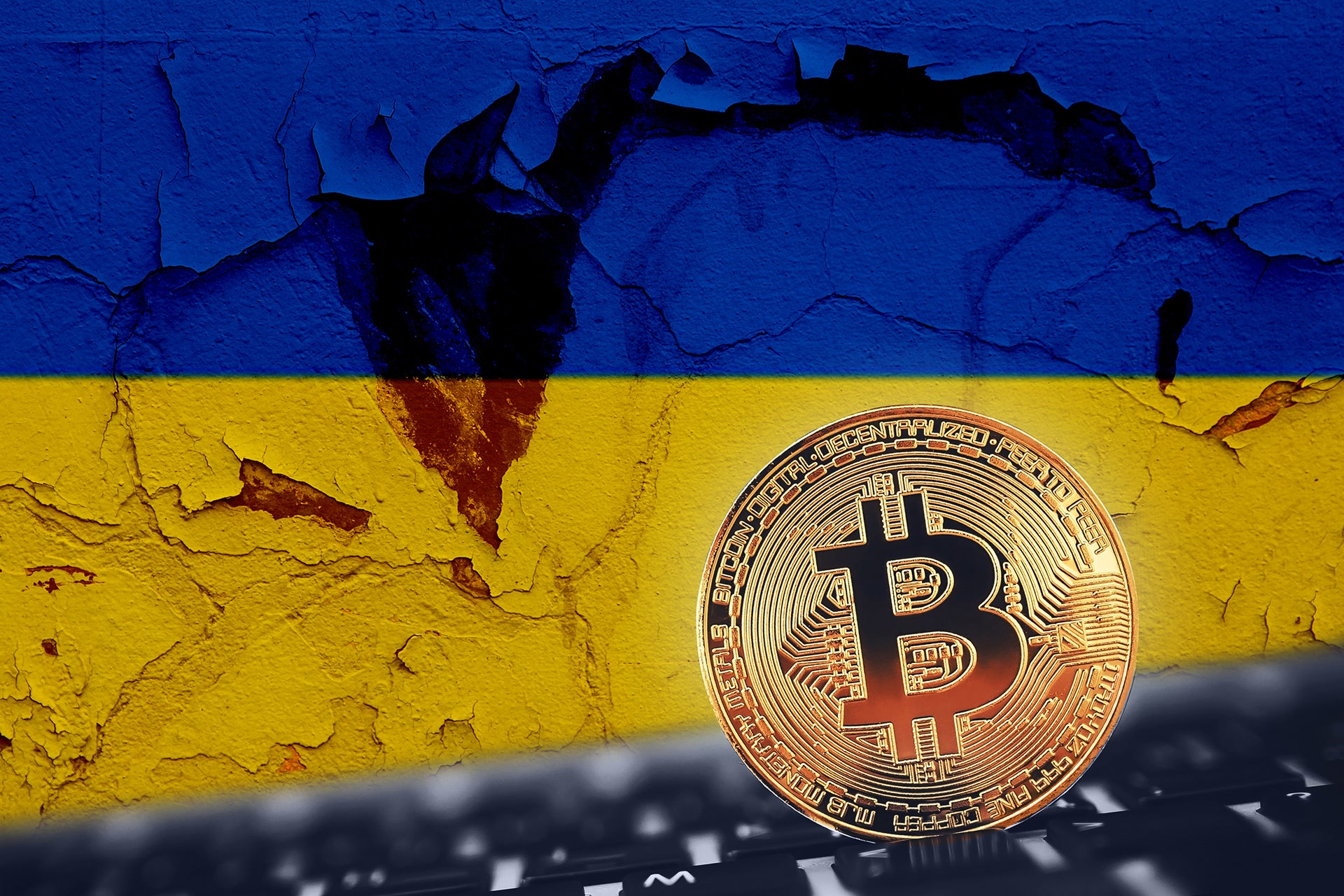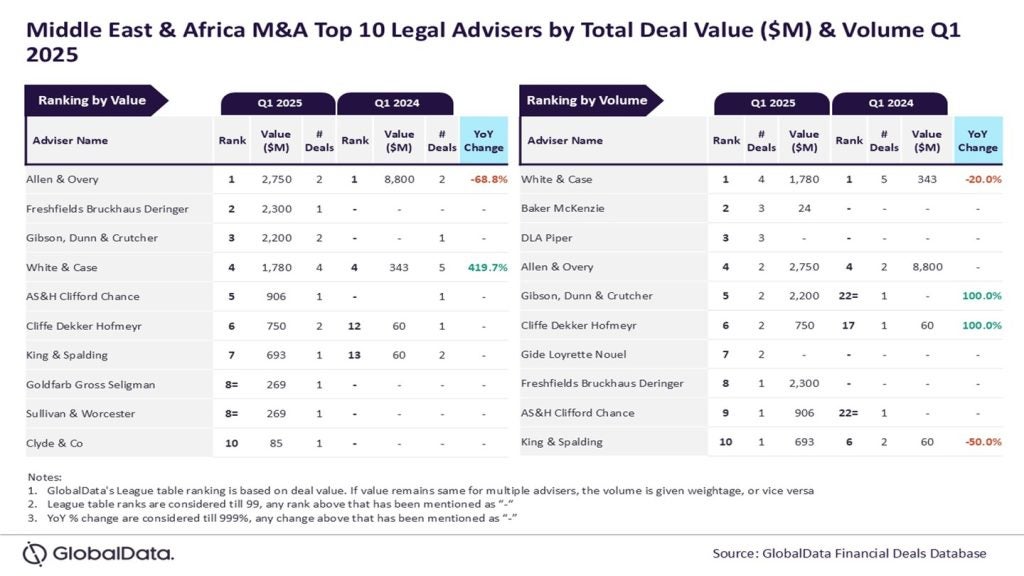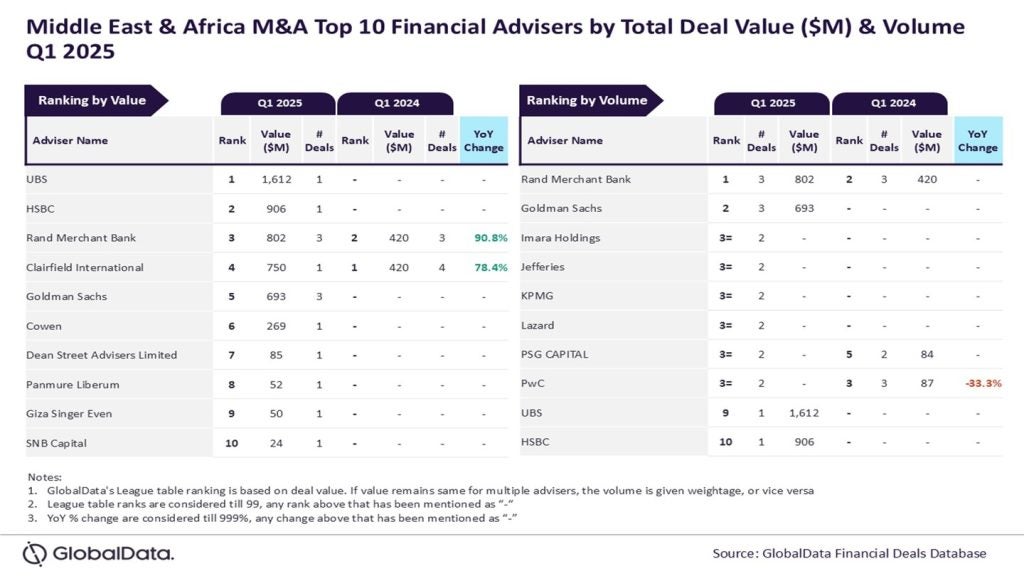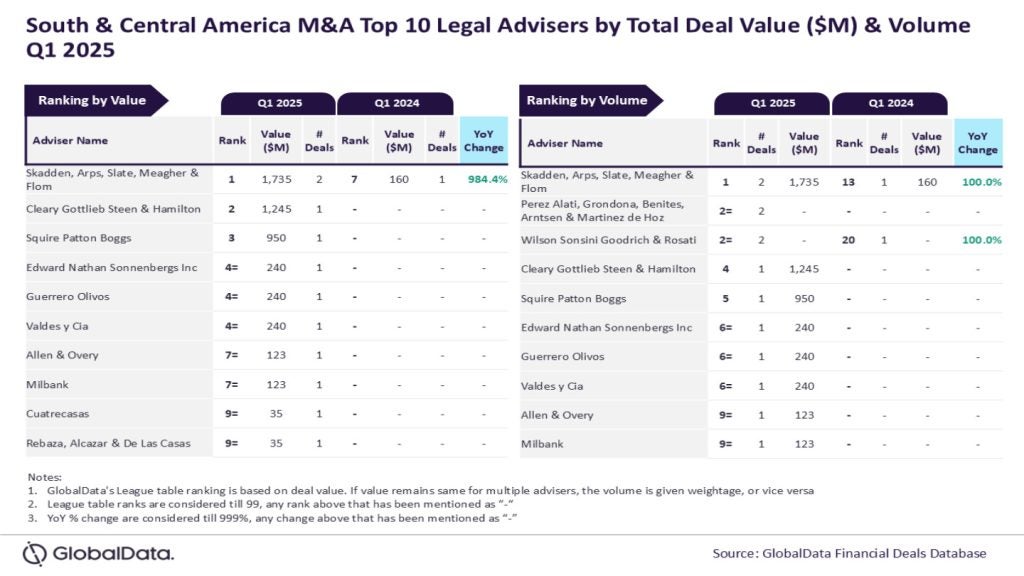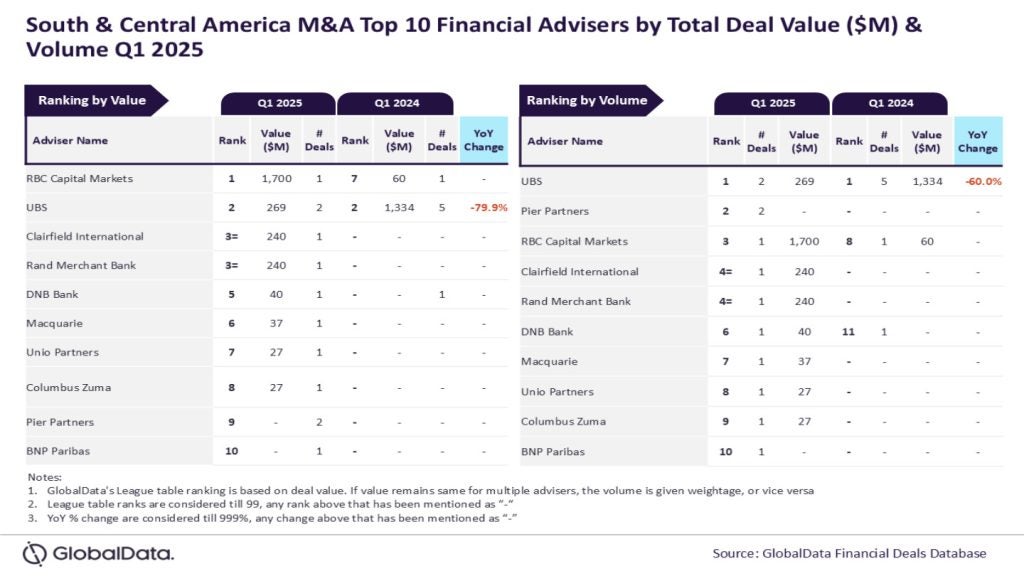The Ukraine crisis will show whether bitcoin and other cryptocurrencies truly are safe haven assets similar to gold. As of Thursday February 24, things are not looking great for the cryptocurrency evangelists who’ve been touting digital dosh’s safe haven status. As reports of the first casualties in the conflict hit the wire, the price of bitcoin has taken a nosedive while the price of gold has shot through the roof. However, analysts warn that the cryptocurrency market is going to change no matter what happens next.
“We’re kind of in the death rattles of crypto as speculation will probably come down and, basically, the only thing that will really sustain the market much five years from now is actual use cases,” George Monaghan, analyst at GlobalData’s thematic research team, tells Verdict. “I think this kind of Wild West feeding frenzy – this loss porn and gain porn where the thing that dictates how good a crypto is is what the price is doing – [is coming to an end].”
While bitcoin reached an all time high above $69,000 in November last year, digital dosh in general has had a rough start to 2022. The cryptocurrency market lost over $1tn in value in January, leading to talk of an oncoming cryptocurrency winter.
The rise and rise of digital money during the pandemic has been linked to the idea that some cryptocurrencies had become new safe haven assets. This refers to assets people invest in during times of market uncertainty. The price of gold and bitcoin did somewhat align for some time during the Covid-19 crisis, admittedly with some fluctuations.
Gold reached a £1,406 high in November and, like bitcoin, its price dropped in January. However, it only dropped a little bit and has since mostly recovered. Gold is currently trading at £1,392, according to the UK’s Royal Mint.
The Ukraine conflict is set to create more market uncertainty, raising the question of what the crisis would mean for bitcoin and the cryptocurrency space.
What will the Ukraine conflict mean for bitcoin?
More than 100,000 Russian troops were massed on the Ukrainian border at the end of January, signalling an escalation of the conflict that started in 2014 when Russia de facto annexed Crimea. Over the past month, Russia on the one hand, and the US and its Western allies on the other have publicly attempted to negotiate a deescalation of the crisis.
Ukraine has been caught in the middle. Ukrainian president Volodymyr Zelensky is now actively advocating for the nation to join NATO. Vladimir Putin’s regime is opposed to a Ukrainian NATO membership and has demanded guarantees to ensure that it never happens. The crisis has undoubtedly caused market uncertainties, which would arguably mean that bitcoin, ether and other cryptocurrencies would enjoy price spikes.
While bitcoin has indeed climbed from its $35,070 low point in January to reach $44,591 high in February as tensions in the Ukraine grew, market experts advise caution.
“It’s very hard to predict,” Charlie Steele, partner at risk mitigation consultancy Forensic Risk Alliance, tellsVerdict.
“Crypto pricing has proven to be highly volatile and unpredictable – remember for example how a few jokes by Elon Musk on the Saturday Night Live television show in the US caused Dogecoin to drop 30%, and then start to rebound before the show was over.”
Others, like Mike McGlone, senior commodity strategist at Bloomberg Intelligence, are more bullish.
“In most scenarios, I see bitcoin coming out ahead,” McGlone tells Verdict. “Demand and adoption are on the rise versus diminishing supply, and the price is at a discount from all-time highs and moving averages like the 50-week, within an enduring bull market. Ethereum is similar, then there are about 17,000 wannnabes. I see bitcoin, ethereum and the proliferation of crypto dollars as the enduring survivors in the space.”
Then of course, there are the ones suggesting that the surge of bitcoin, ether and other digital money over the past two years had nothing to do with their potential safe haven status.
Bitcoin’s Covid-19 surge: More FOMO than safe haven
The price of bitcoin skyrocketed from $5,165 in March 2020 to over $69,000 in November 2022. Other cryptocurrencies enjoyed similar spikes during the pandemic.
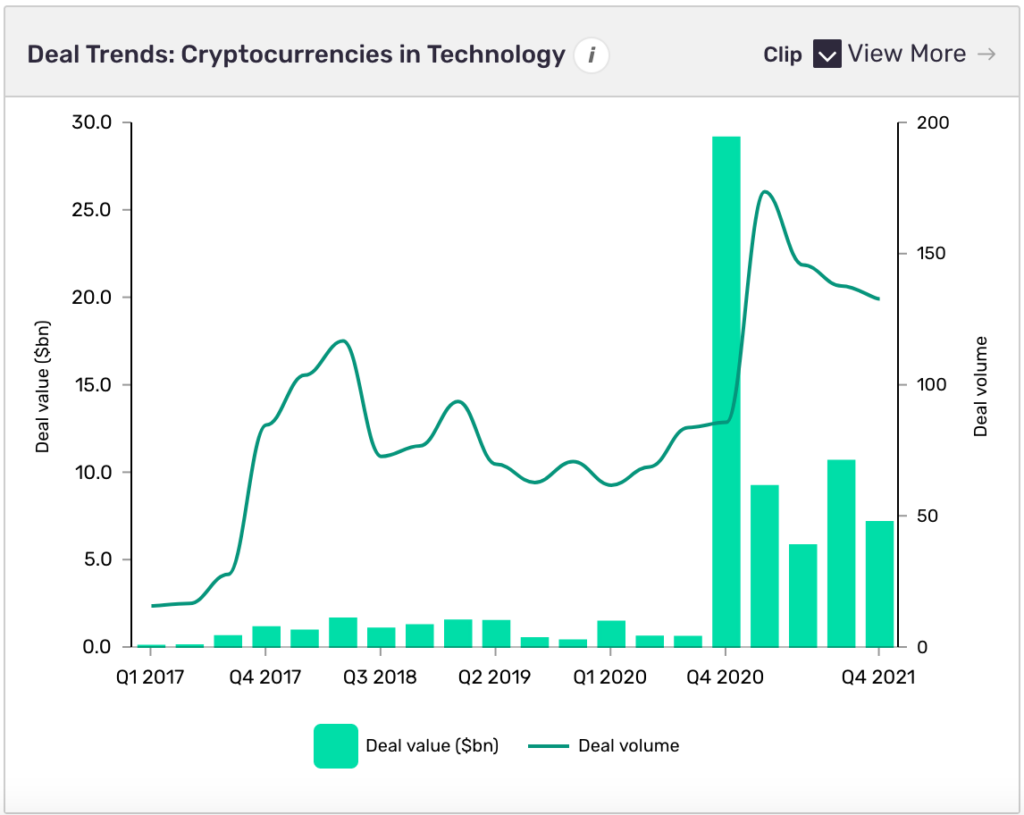
Funding deals in the cryptocurrency space also exploded during the health crisis. For comparison, the 298 venture financing, M&A and public funding deals recorded in the sector had a total value of $3.9bn in 2019, according to analyst firm GlobalData’s data. Those numbers jumped to 301 deals worth $31.787bn in 2020.
This could suggest – and indeed many think pieces did – that this proved bitcoin and other digital currencies’ new status as safe haven assets.
Monaghan, however, believes other factors than market uncertainties caused the increase in cryptocurrency valuation in that period.
“It was a perfect storm,” he says. “There was massive media attention. People were getting government stimulus packages, and they were at home and on the internet more. They were reading more about crypto and they chucked money into it and it flew up.”
And as prices climbed, more people wanted to invest out of fear of missing out, Monaghan suggests, essentially liking it to the skyrocketing valuations of food delivery startups like Deliveroo during the pandemic. In other words: he believes it was more a question of FOMO rather than bitcoin and ether being safe haven assets.
“They’re obviously the safest among the cryptos, there’s no doubt about that,” Monaghan says. “Gold actually does something, eventually. Crypto does something too but no one who is investing crypto knows what that is. That’s the problem. That will always be the problem.”
Enter the big purge
The Ukraine is hardly the only reason why bitcoin and other cryptocurrencies have fallen recently, admittedly landing at higher valuations than they did during the summer slump of 2021.
Other factors include the anticipation of the US Federal Reserve raising interest rates, countries like the US and Russia moving towards tougher regulations, Bitmart and other cryptocurrency exchanges falling victim to hacks, lingering Covid-19 fears and just simple loss of faith in the asset class.
“The bottom of crypto volatility is always gonna be people don’t trust the asset,” Monaghan says. “And they know themselves why they bought it, which was because they could make some money. It’s not because they thought blockchain and decentralisation are good. Basically no one’s even read a white paper.”
The combination of factors have caused some market stakeholders to suggest we’re heading towards a cryptocurrency winter. Some would even welcome it.
“The space needs purging as indicated by the speculative excesses in the dog coins last year (Doge, Shiba Inu) and the excess in supply, 17,587 tradable cryptocurrencies on coinmarket cap this am,” McGlone says. “A year ago was about half that and a year prior to last about half. Simple rules of economics do not favour broad market price appreciation when there is excess supply and ease of entry.”
GlobalData is the parent company of Verdict and its sister publications.
This story has been updated to reflect the developing situation in Ukraine.

